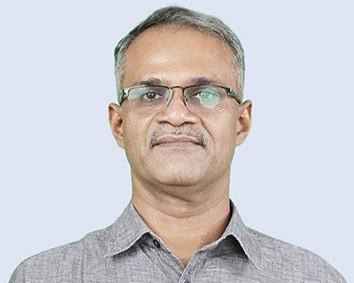The recent NSO report titled Situation Assessment of Agricultural Households and Land and Livestock Holdings of Households in Rural India, 2019 (hereafter referred to as SAS 2019) has re-initiated discussions on economic viability of farming in India. The SAS provides an opportunity to examine the household incomes of agricultural households and how incomes have changed over time. The definition of an agricultural household in SAS 2019 is similar to the previous round of the survey, SAS 2013, where an agricultural household is defined as an “agricultural production unit which produced field crops, horticultural crops, livestock and the products of any of the other specified agricultural activities with or without possessing and operating any land, with updating the income cut-off adjusted with inflation” (from Rs 3000 in 2012-13 to Rs 4000 in 2018-19).
While the consistency in definition allows us for comparison, a few finer differences must not be ignored while making comparison of incomes between the two rounds of SAS. First, the imputed costs (such as owned seeds, manure, and family labour) were also considered while accounting for the expenses in agricultural operations in SAS 2019. Only paid-out costs were considered for calculation of incomes in SAS 2013. Secondly, the sources of income for an agricultural household have an additional variable in SAS 2019: “income generated from leasing out land.” For most of the states, it ranged between 1 – 3 percent of household income, except Punjab where it amounted to 10 percent. This component was not exclusively part of the SAS 2013 and therefore, it is difficult to derive whether information on income from leasing out land was derived implicitly or left out in 2013.
After taking only the paid-out cost for the two rounds of the surveys, we can see that the average monthly income of agricultural households was Rs 6426 in 2012-13 and Rs 10,218 in 2018-19 in nominal terms. After adjusting for inflation, that is in real terms, the average monthly income of agricultural households has increased by 16 per cent from 2012-13 to reach Rs 7427 in 2018-19 (the deflator used here is Consumer Price Index – Rural). An examination of the components of household income provides a detailed view of the change between 2012-13 and 2018-19.
One of the key outcomes of the report has been the discussion on the contribution of wage income to agricultural households. The major proportion of income for agricultural households came from wage-earnings (40 per cent) and not crop production (37 per cent) in 2018-19. In 2012-13, almost half of household income was sourced from crop production (see table below). It is not just the share of crop income but even the real crop income has declined over the 6-year period (from Rs 3081 to Rs 2760). This decline in crop income is consistent across size-classes. Along with this, the real incomes from farming of animals increased significantly (by 51 percent) and the share of income from farming of animals increased from 12 to 15 per cent. The share of non-farm business income declined marginally from 8 to 6 per cent of household incomes, mainly due to decline in real incomes from Rs 512 to Rs 466 per month.
The above table provides a detailed account of changes in structure of household income from 2012-13 to 2018-19 at the all-India level by different size classes of land holdings. For the marginal farmers, that are households with less than 1 hectare of land, a major proportion of income was already coming from wage earnings in 2012-13. The share of wage income for these households has remained high in 2018-19 also. But what is striking is that share of wage income has increased for farmers from other size classes between 2012-13 and 2018-19.Around 70 per cent of household income was derived from crop production for the medium and large farmers (size classes owning more than 4 hectares) in 2018-19.But even they have seen an increase in the share of wage income from 2012-13 to 2018-19.[1]Along with an increase in wage incomes, the incomes from farming animals have also increased for almost all size classes. The increase is more pronounced for the large farmers (10+ hectare), where the share of income from farming animals has increased from 6 to 19 per cent. There seems to be an aversion on behalf of farmers to invest and expand in non-farm businesses. It seems that they have tried to secure themselves by engaging in relatively more informed area of farming of animals, plausibly due to economic shocks during the six years under consideration, such as the consecutive droughts in 2014-15 and 2015-16 and demonetisation.
The regional dimension of the change in real income and structure of incomes can be studied from the table below. Almost every state witnessed an increase in share of wage income, except Bihar, Punjab and the north-eastern states of Arunachal Pradesh, Manipur, Meghalaya, Mizoram, and Nagaland. The share of crop income has declined for every state, with magnitude of decline ranging above 30 percent for the north-eastern states of Assam and Arunachal Pradesh. Only the states of Meghalaya, Sikkim, and Odisha witnessed an increase in share of crop income. However, this does not mean that there is a significant increase in incomes from crop production in these States. For example, the share of crop income increased from 28 to 31 per cent in Odisha, but the monthly crop income has declined from Rs 1407 to Rs 1140 in real terms from 2012-13 to 2018-19.
The increase in share of income from farming of animals is also a clear trend in most of the States. Only considerable outliers are Jharkhand and Odisha, where incomes from farming animals have declined sharply between the two years. These two States also happen to be the bottom two States in terms of household incomes in 2018-19 (Rs 3558 and Rs 3716 per month respectively). In both these States, the increase in share of wage income was highest (18 per cent) amongst all States, indicating that farmers relied more on wage labour as a viable source of income generation than investing in crop production or farming of animals.
A few questions arise from the changes in income structure of agricultural households.
First, although the share of wage income is increasing, does it imply that wage rates in rural India are contributing to this change? This editorial in RAS says that “the steady growth rate of agricultural and rural labour wages ended in 2014-15. The growth of real wage rate from 2014–15 to 2017–18 was less than in the previous period in most states.” It can be inferred that the increase in wage income has more to do with a transition of people from crop production to wage labour due to unviability of crop production, and not because of any significant change in wage rates.
Secondly, what can be the possible reasons for the decline in the share of crop income? The decline is visible not just in the share but also real monthly crop incomes (by 10 percent). For more than 3/4th of the states, the real crop incomes have declined over the period. A detailed examination of the reason behind this can be ascertained using unit level data. The existing debates in the literature on crop incomes suggest that apart from productivity, two key factors directly affect the crop incomes, which are cost of cultivation and prices received by farmers. Since SAS is not an annual survey, one has to rely on another source of data, the Comprehensive Scheme for Cost of Cultivation/Production of Principal Crops in India (CCPC)published by the Directorate of Economics and Statistics, Ministry of Agriculture and Farmers’ Welfare, for annual changes in costs and prices. For major crops, the real cost of cultivation has been increasing since 2010. Rising labour costs (both human and machine) followed by purchased inputs (seeds, fertilisers, and pesticides) are major contributors to the costs of cultivation. In terms of prices, SAS 2019 data indicate that around 30-50 per cent of farmers, varying by crops cultivated, reported that they were not satisfied with the price received for their produce. The minimum support price (MSP) mechanism has also been inadequate to cover the increasing costs of cultivation. The decline in crop incomes, due to rising costs and insufficient prices, has resulted in the reduced share of crop production in household income.
The changing structure of incomes for agricultural households presents a dismal picture of the state of crop production in India. Farmer households engage in wage labour and rearing animals to overcome the low and declining incomes from crop production. The reduced incomes from crop production would become more pronounced if the imputed costs are also considered for calculating incomes. As per the Dalwai Committee report, which studied the prospects of doubling farmers’ income in India, the expected objective of doubling farmers’ income is meant to be achieved in real terms from 2015–16 to 2022–23. While there are debates on whether we can achieve this objective, the current state of agricultural incomes show that the policy measures must go beyond income support to address the structural issues such as increasing cost of cultivation and lack of remunerative prices received by farmers.
[1] Since wage income includes by wages of casual labourers and salaries of salaried employees, there is a case to argue that the share of wage incomes has gone up for large farmers due to the contribution from salaries. However, data from 2018-19 show that 6.2 per cent of rural households possessing more than 10 hectares of land are classified as casual labour households and only 4.8 per cent as regular salaried earning. A careful analysis using unit level data is required to examine the precise reasons behind such patterns.
About the author
Kunal Munjal is a PhD Scholar at the Economic Analysis Unit, Indian Statistical Institute, Bengaluru.
















































































